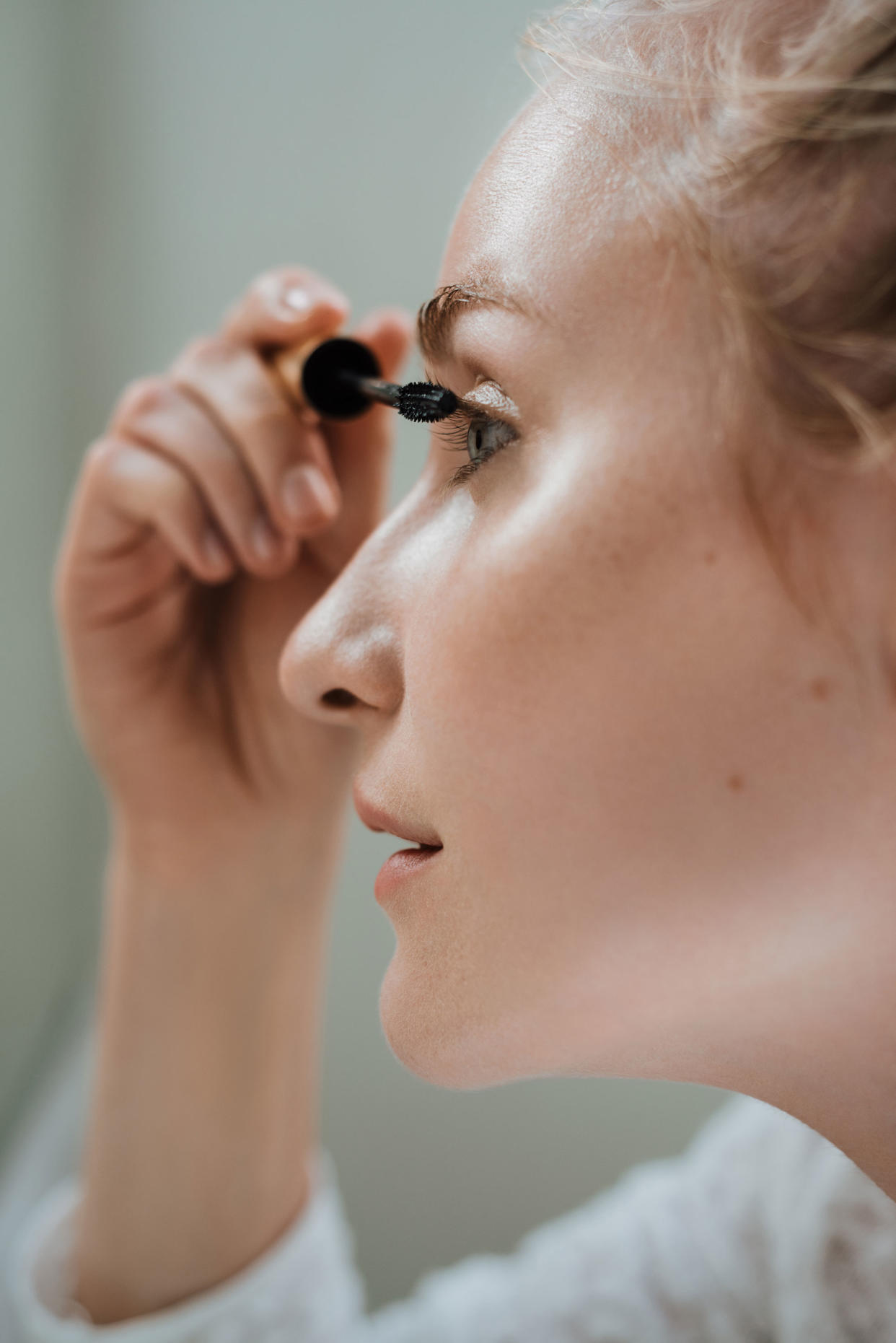The Exact Order You Should Apply All Your Makeup

The back of a foundation bottle might give you some direction on how to apply the liquid-y solution to your face, but definitely doesn’t indicate where it falls within your routine.
Makeup order is a tricky topic, mostly because there’s differing opinions on what product lands on your face first, but if you’re tired of stressing over when to apply concealer or if you should really do your eye makeup before sponging on foundation, you’ve landed on the right webpage. To clear the confusion on the true order to apply makeup, I reached out to makeup artist Neil Scibelli and got his expert opinion. Keep scrolling to find out if primer is needed at all, when you should reach for that eyeshadow palette, and more.
Step 1: Skincare
How many times have you read about the importance of prepping the skin before makeup application? Sure, the advice is repetitive (especially if you've scrolled through a red carpet beauty gallery), but it's legit. "I always start with skincare, and a primer," explains Scibelli.
While the exact products applied will vary based on the client's skin type and needs, a thorough skincare routine helps the makeup adhere to the skin better, reduces the chances of it flaking off, and can even help your skin appear more glowy.
"I typically start with a hydrating or luminizing eye cream, and a good lip balm," he says. Then, he moves onto moisturizer: an oil-free version or just a hydrating primer if the client has oily skin, and a creamier, more emollient moisturizer if the client has dry skin.
Step 2: Primer
Using a primer is pretty optional, says Scibelli, but for the sake of this explainer, it falls directly after your skincare routine. Oily skin types tend to benefit from the long-lasting, oil-reducing qualities of a primer, while other primers are specifically made to help the skin appear more luminous, hydrated, and even enchance your foundation's glow-boosting effects.
RELATED: Everything You Need in a Makeup Kit for Beginner's
Step 3: Eyes
OK, so this rule isn't set in stone, but there's solid reasoning for completing your eye makeup and eyebrows before applying any type of complexion products. "I typically complete brows and eyes before applying foundation," says Scibelli. "This is because I can clean up under the eyes if need be, without disrupting concealer or foundation, especially if it's a heavier eye look."
While this method helps eliminate the mess of fixing fallout or mascara smudges, you can also apply eye makeup after your complexion products (making it Step 5).
Step 4: Foundation
"I work on foundation, and blending the overall complexion, first," says Scibelli. This is where you'll see the coverage of your foundation and its finish really come into play.
Step 5: Concealer
"Sometimes you'll be surprised how much your foundation can layer and cover without adding concealer," notes Scibelli. After he assess what areas of the face need more coverage, he goes in with concealer. This usually consists of under the eyes, areas prone to redness, blemishes, etc.
RELATED: How to Build a Beginner's Makeup Kit at Target
Step 6: Bronzer/Blush/Highlighter
After the skin tone is evened out and set with complexion products, feel free to add a pop of color on cheeks, a shimmer on the high points of the face, or a bit of contouring with bronzer. If you mess up, you can always use a beautyblender that already has leftover foundation on it to quickly fix the mistake.
VIDEO: How To Use a Beautyblender
Step 7: Lips
If you're wearing a gloss, you might want to apply your powder and setting spray first, but in my opinion, lipstick is always a solid last step when applying color cosmetics because it's the easiest to reapply as the day wears on it. However, Scibelli says that it all really depends on what type of look you're creating. "You may be basing your look on a certain lip color, so maybe applying that first is a great guideline for you," he adds.
Step 8: Translucent Powder and Setting Spray
You can use one, both, or neither, but both of these products are designed to help your makeup last longer and look better as the day goes on. "I always apply powder as a last step, typically after the entire look is done, just so the skin can wear into itself for a bit while I finish the rest of the look," says Scibelli. "It's also freshest when applied before heading out the door." If it's particularly humid out or he knows his client has a long day planned, he'll sprtiz on some setting spray.
While this might annoy you, the real truth is there's no definitive rule on when you apply certain makeup products. It all depends on your skill level, the look you're going for, and how you're comfortable applying makeup. The only hard-and-fast rule? Skincare, skincare, skincare first!

